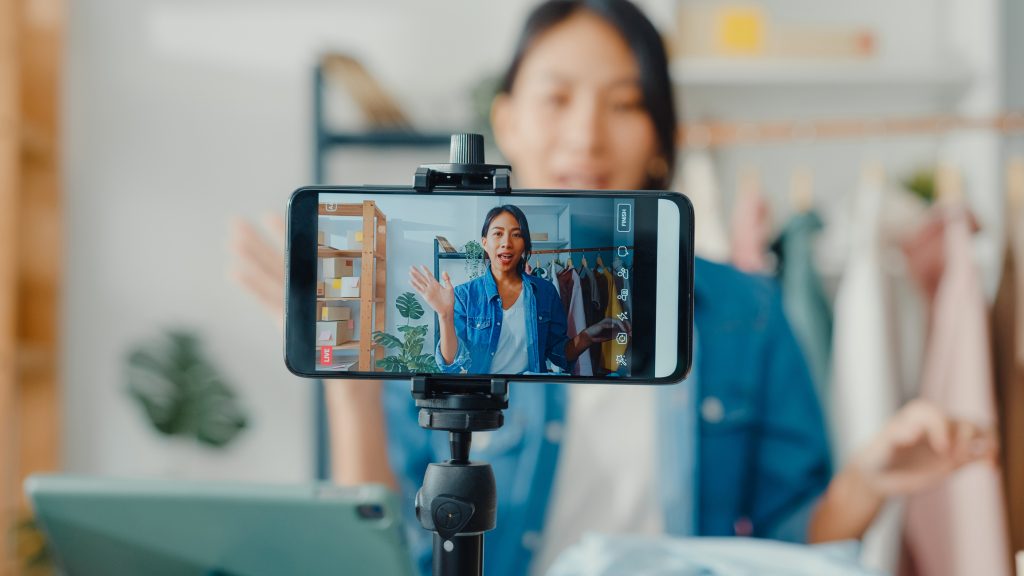Digital marketing is always changing. As a digital marketer or a small business owner, you need to stay one step ahead of the trends to stay relevant and effectively sell your products.
Here are the upcoming digital marketing trends for 2022.
Increased Use of Virtual Assistants and Chatbots
Virtual assistants and chatbots are a key component of customer service these days. They can respond to basic customer needs and requests by providing updates on delivery, answering frequently asked questions and rescheduling appointments.
Many customers enjoy interacting with chatbots because they’re available 24/7 and they provide instant to simple questions. Plus, they can accurately recall a customer’s entire buying history, making certain inquiries much easier.
Obviously, a chatbot can’t respond to more sophisticated requests, but it can certainly deal with repetitive tasks, which allows you to use valuable resources in other parts of your business.
From Physical to Virtual Events
Since the COVID-19 pandemic hit in March 2020, virtual events have become a way for companies to stay engaged with their customers without meeting physically. Now that people are much more comfortable with the idea of virtual meetings and conferences, marketers have an opportunity to attract more people than ever before to an event. People from around the world can attend a virtual event without having to spend time and money travelling.
As we move toward the new normal, organizing hybrid events will help you attract the most amount of people possible. When you’re planning events for 2022, make sure they include a digital component, like live-streaming presentations and digital-friendly Q&A sessions. Those who like to gather in person can do so, while the people who prefer to attend from home can also get value from the event.

Mobile-First Marketing and Commerce
Smartphones are becoming more and more present in consumers’ lives and are therefore going to play a much larger role in their purchasing habits. Some brands are leveraging this and pushing our mobile-centric world forward at the same time.
Amazon recently launched Amazon Pay, an online payment processing service meant to simplify checkout. Google has partnered with Citi and Stanford Federal Credit Union in its latest update to the Google Pay app.
Here are a couple of tips to help you adapt to increased mobile usage:
- Make your website responsive.
- Use mobile payments.
- Organize your homepage to feature the most important elements at the top.
- Make sure your call to action buttons are big enough to read on a phone screen and press with a finger.
- Tailor your online experience to your audience.
- Make the checkout process as simple as possible.
- Provide access to different payment processing options while keeping everything on your website secure.
As people spend more time on their phones, browsing social media and the Internet, you want to make sure your website is optimized for the experience.
From Third-Party Cookies to First-Party Cookies
Third-party cookies have traditionally allowed marketers to collect data on Internet users to help them develop and target ad campaigns. However, there are new limits on the way companies can use their customers’ data, thanks to the General Data Protection Regulation (GDPR) in the European Union and California Consumer Privacy Act (CCPA). Therefore, companies have to rely on their own data collection now.
This will force marketers to be more mindful of the information they collect about their customers and how they use it. As the marketing world figures out how to navigate these new regulations, here are a couple of things you can do in the meantime:
- Create a highly visible data collection notice that pops up when your user connects to your website.
- Use a friendly tone in your form.
- Explain what you’re collecting and why you’re doing it.
- Let users modify their data collection preferences on your website.
Users are becoming increasingly worried about their online privacy and large companies are adapting. Google recently announced it will phase out support for third-party cookies. Use tools like Google’s Privacy Sandbox or Federated Learning of Cohorts (FLoC) for personalization and consumer targeting without overstepping the boundaries. It may also be necessary to use CRM tools, surveys and interactive content to better understand your customers.
More Use of Programmatic Advertising
Programmatic advertising uses AI to automate ad buying to help companies get a more reliable and cost-effective solution to their marketing needs. The popularity of programmatic advertising has continually increased over the past five years. Marketers around the world spent US$155 billion on programmatic ads in 2021 compared to US$68.2 billion in 2017.
Programmatic ads are so popular because they use hundreds of inputs to individualize an advertisement, like the consumer’s unique lifestyle and habits.
One of the best ways to get involved in programmatic advertising is to start with real-time bidding. This uses real-time auctions to buy guaranteed ad impressions in advance from specific publisher sites.

Personalization Becoming More Important
Customers like personalization. Just think of the personalized suggestions you get on Netflix, Amazon or Spotify. They have all been incredibly successful in suggesting products, movies and songs based on their customer’s personalized preferences.
In fact, the personalization platform SmarterHQ has found that 72% of shoppers now only engage with personalized marketing messages. And according to a Salesforce survey, personalization leads to an increase in customer experience, conversion rates and visitor engagement.
Anything you can do to improve personalization will pay dividends. To get started, try offering personalized recommendations on your website, in your emails or even in your mobile app.
Video Marketing for Better Engagement
Video content marketing has exploded in popularity, and there’s no sign it’s slowing down any time soon. Biteable, a video creation platform, conducted a survey that found that 60% of businesses use video as a marketing tool, 74% say video has a better return on investment than static imagery and 52% say video helps build trust with potential customers.
Facebook, Instagram and LinkedIn all support video content, and are all great channels to experiment with video marketing. Start by repurposing or republishing existing content in the form of a video. Or create a video and then publish the transcription as an article or a podcast.
Whatever way you slice it, there are ways to increase your video marketing without putting in too much effort. Get as much mileage as you can out of your content and adapt it to all formats, including video.

Consumers Using Social Messaging Apps More
Social messaging apps like WhatsApp, Facebook Messenger and WeChat are being used for more than just staying in touch with friends and family. These apps have a combined 4.5 billion users and 56% of them say they have messaged brands for information.
Nowadays, customers expect you to have a presence on messaging apps. And since it’s such an easy and direct form of communication for billions of people, it can only help your business to be available there.
Voice Search Growing in Adoption
It may seem like it’s a fancy feature no one actually uses, but voice search is being used by lots of people today. About 20% of all Internet searches are voice-based and 40% of adults use voice search daily. What’s more, about one billion voice searches take place every month. It’s the real deal.
Voice search is key to providing relevant information for search engine users and it has gotten increasingly sophisticated. Google Assistant has one million actions and Alexa has over 100,000 skills.
With those kinds of numbers, companies will certainly start producing more content with voice search optimization capabilities and will likely begin creating audio ads soon. The best way for you to stay ahead of the curve is to think about a unique approach that ties into a broader and cohesive brand experience.
AI-Powered Influencer Marketing
Influencer marketing has been huge for many years now. The influencer market is estimated to reach $15 billion in 2022 up from $9.7 billion in 2020. Most marketers report that they earmark more than 20 percent of their budget on influencer content.
As artificial intelligence becomes increasingly widespread, AI in digital marketing is next, with influencer identification and performance influencer marketing that will let you pay only for the conversions and sales that influencers produce, which will end up benefiting your bottom line.
Make 2022 Your Best Marketing Year
The world of digital marketing is changing and the companies that keep up will be the ones that are successful. If you’d like to work with our team of experts to stay on top of these future trends in digital marketing, reach out to us today!
